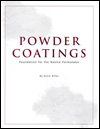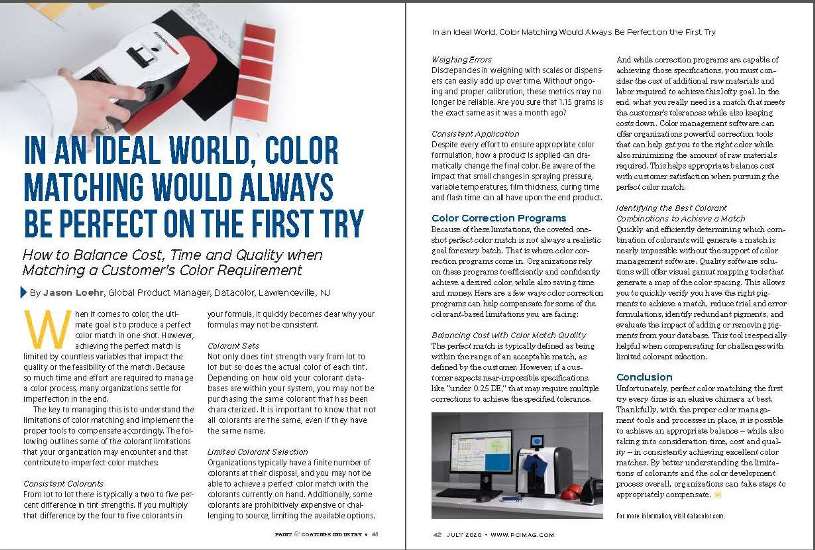In an Ideal World, Color Matching Would Always Be Perfect on the First Try
How to Balance Cost, Time and Quality when Matching a Customer’s Color Requirement



When it comes to color, the ultimate goal is to produce a perfect color match in one shot. However, achieving the perfect match is limited by countless variables that impact the quality or the feasibility of the match. Because so much time and effort are required to manage a color process, many organizations settle for imperfection in the end.
The key to managing this is to understand the limitations of color matching and implement the proper tools to compensate accordingly. The following outlines some of the colorant limitations that your organization may encounter and that contribute to imperfect color matches:
Consistent Colorants
From lot to lot there is typically a two to five percent difference in tint strengths. If you multiply that difference by the four to five colorants in your formula, it quickly becomes clear why your formulas may not be consistent.
Colorant Sets
Not only does tint strength vary from lot to lot but so does the actual color of each tint. Depending on how old your colorant databases are within your system, you may not be purchasing the same colorant that has been characterized. It is important to know that not all colorants are the same, even if they have the same name.
Limited Colorant Selection
Organizations typically have a finite number of colorants at their disposal, and you may not be able to achieve a perfect color match with the colorants currently on hand. Additionally, some colorants are prohibitively expensive or challenging to source, limiting the available options.
Weighing Errors
Discrepancies in weighing with scales or dispensers can easily add up over time. Without ongoing and proper calibration, these metrics may no longer be reliable. Are you sure that 1.15 grams is the exact same as it was a month ago?
Consistent Application
Despite every effort to ensure appropriate color formulation, how a product is applied can dramatically change the final color. Be aware of the impact that small changes in spraying pressure, variable temperatures, film thickness, curing time and flash time can all have upon the end product.
Color Correction Programs
Because of these limitations, the coveted one-shot perfect color match is not always a realistic goal for every batch. That is where color correction programs come in. Organizations rely on these programs to efficiently and confidently achieve a desired color, while also saving time and money. Here are a few ways color correction programs can help compensate for some of the colorant-based limitations you are facing:
Balancing Cost with Color Match Quality
The perfect match is typically defined as being within the range of an acceptable match, as defined by the customer. However, if a customer expects near-impossible specifications, like “under 0.25 DE,” that may require multiple corrections to achieve the specified tolerance. And while correction programs are capable of achieving those specifications, you must consider the cost of additional raw materials and labor required to achieve this lofty goal. In the end, what you really need is a match that meets the customer’s tolerances while also keeping costs down. Color management software can offer organizations powerful correction tools that can help get you to the right color while also minimizing the amount of raw materials required. This helps appropriate balance cost with customer satisfaction when pursuing the perfect color match.
Identifying the Best Colorant Combinations to Achieve a Match
Quickly and efficiently determining which combination of colorants will generate a match is nearly impossible without the support of color management software. Quality software solutions will offer visual gamut mapping tools that generate a map of the color spacing. This allows you to quickly verify you have the right pigments to achieve a match, reduce trial and error formulations, identify redundant pigments, and evaluate the impact of adding or removing pigments from your database. This tool is especially helpful when compensating for challenges with limited colorant selection.
Conclusion
Unfortunately, perfect color matching the first try every time is an elusive chimera at best. Thankfully, with the proper color management tools and processes in place, it is possible to achieve an appropriate balance – while also taking into consideration time, cost and quality – in consistently achieving excellent color matches. By better understanding the limitations of colorants and the color development process overall, organizations can take steps to appropriately compensate.
For more information, visit datacolor.com.
Looking for a reprint of this article?
From high-res PDFs to custom plaques, order your copy today!














